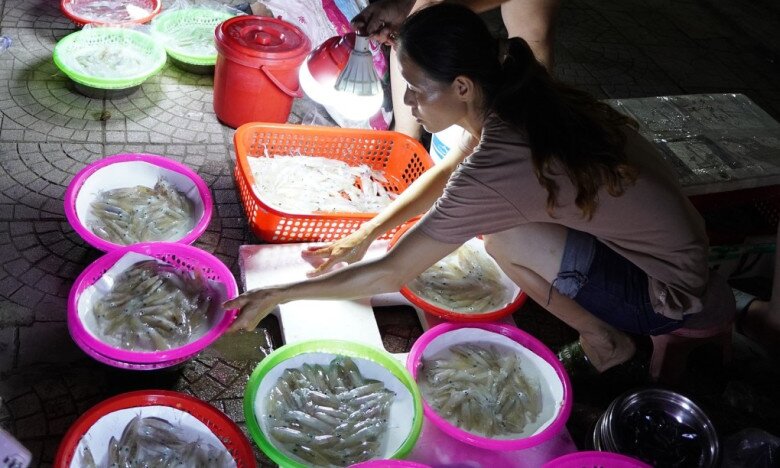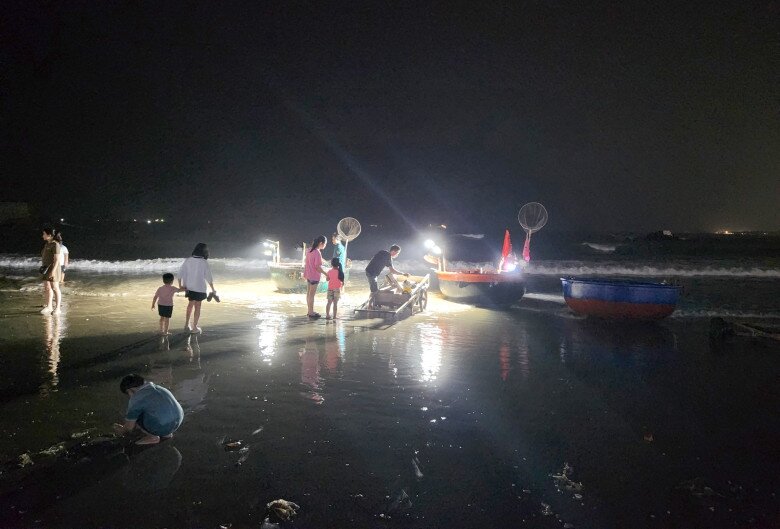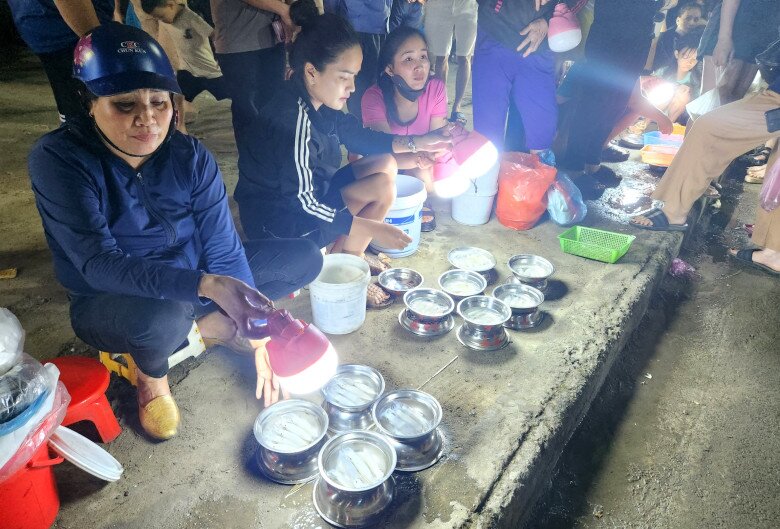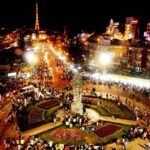The bustling squid market comes alive at night with approximately 100 vendors setting up shop. The squid sold here is caught by local fishermen and brought to shore for their family members to sell. The market opens as soon as the squid arrives, usually around 8 pm. The busiest and most vibrant time at the market is from 8:30 pm to 10:30 pm. After this time frame, prices for the squid gradually decrease, but they are still sold out by the end of the night.

Without permanent stalls or signs, each vendor is equipped with a handheld LED light to illuminate their wares. As the night progresses, the initially sparse gathering of lights transforms into a vibrant corner of the street, bustling with shoppers.
The trading scene at this market is unique. Vendors estimate the weight of the squid and place them in metal bowls for sale. There are no tables or chairs, just the squid and a small rechargeable lamp. The atmosphere is lively and dynamic, with vendors quoting prices and customers haggling. If a deal is struck, the exchange of squid and money is swift.
The term “squid flashing” or “jumping squid” is used by the locals of Nghe An to describe these freshly caught squid, which are still shimmering with life. Typically, one to two hours after being lifted from the sea, the iridescent spots and brown-violet hues on their eyes and bodies continue to flash like stars.


The squid from Cua Lo Beach is not overly large, with a size comparable to a thumb. Vendors display them in stainless steel basins or plastic baskets, making it easy for tourists to inspect their freshness. Each bundle contains 5-10 squid, depending on their size, and is sold for 100,000 to 200,000 VND. Customers find the prices at this market to be reasonable and affordable.
According to the Cua Lo Town’s electronic information portal, this type of squid is a local specialty, typically available from March to August each year. During the season, locals go squid fishing in thúng boats (traditional Vietnamese basket boats), with the men doing the fishing and the women waiting onshore to sell the catch. On weekdays, the majority of customers are locals who are connoisseurs of the delicacy or owners of eateries in the area. In the summer, Cua Lo Beach attracts numerous tourists who come to buy and savor the freshly caught squid. Most of the squid is sold out by the end of the night, and on busy days with many tourists, the demand even exceeds the supply.

After purchasing squid at the market, tourists can take their fresh catch to nearby eateries to have it prepared according to their preferences. The locals recommend eating the squid raw with lemon juice and various accompanying spices. Alternatively, tourists can opt for steamed squid or simple preparations to fully appreciate the sweetness and freshness of the squid straight from the sea. Another popular way to enjoy it is to eat it raw with soy sauce and mustard.
The Cua Lo Beach is renowned for its delicious squid, a rare delicacy that is hard to come by elsewhere. The unique blend of the sea’s salty breeze and the squid’s sweet flavor has made Cua Lo’s cuisine stand out. In 2012, the Vietnam Records Book Center recognized Cua Lo’s flashing squid as one of the top 10 specialties in Vietnam. This accolade not only provided a great opportunity for Nghe An to promote its image to domestic and international tourists but also offered foodies another excellent choice for fresh seafood during their travels.
The night squid market is not just a place to buy fresh seafood; it’s also a fascinating cultural experience. Tourists can chat with the fishermen while selecting their squid, gaining insight into their lives and profession. This unique market is undoubtedly a must-visit destination for anyone exploring Cua Lo Beach in Nghe An.



































